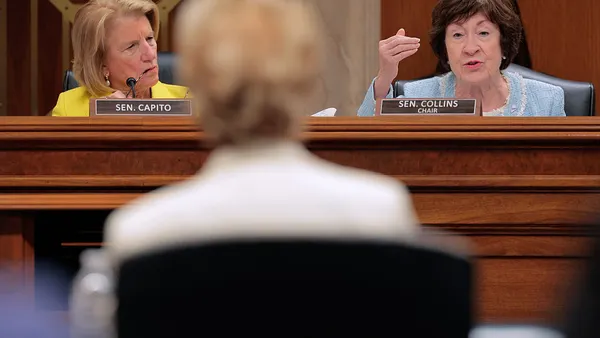Dive Brief:
- The U.S. Department of Agriculture received over 136,000 public comments on its proposed rule to significantly and gradually revise school nutrition standards on whole grains, sugar and sodium following the federal agency’s May 10 deadline for submissions.
- The comments were generally split among those who voiced support for the stricter standards because they would make school meals healthier and opponents who said the proposed changes would hurt student participation in school meal programs.
- Under the USDA proposal, schools would have to offer mainly whole grain products starting in fall 2024, and would also have to slowly reduce sugar and sodium content through 2029. Some proponents of the suggested rule added that the agency doesn’t go far enough in reducing sodium limits and should require more whole grain-rich foods.
Dive Insight:
As debates continue on the USDA’s proposed school nutrition standards, school nutrition directors are increasingly facing higher food prices driven by ongoing supply chain issues, labor shortages and inflation.
April data from the Bureau of Labor Statistics shows food prices at elementary and secondary schools rose 296% year-over-year, even though U.S. food prices increased just at 7.7% in the same period.
While schools grapple with the logistical challenges of serving meals to students every day, they are also beginning to deal with growing meal debt since the pandemic-era waiver granting universal school meals expired in June 2022.
When Agriculture Secretary Tom Vilsack first announced the school nutrition proposal in February, he highlighted concerns regarding childhood obesity in the U.S.
“This is a national security imperative. It’s a healthcare imperative for our children. It’s an equity issue. It’s an educational achievement issue,” Vilsack said in the announcement for the proposed nutrition standards.
The department also extended the deadline for the comment period from April 10 to May 10 to give the public more time to go over the suggested changes. Some Republican leaders have previously pushed back on the proposal with concerns that the USDA has not consulted enough nutrition directors.
In an April Senate Appropriations agriculture subcommittee hearing, Sen. Susan Collins, R-Maine, asked Vilsack if he had discussed the proposed rule with school nutrition directors and how the changes would ensure the additional requirements won’t deter students from eating school meals.
Vilsack responded that the USDA has “absolutely” reached out to school nutrition directors for their input. He added that the gradual timeline would give schools and the food industry enough time to adjust to the proposed changes.
In a recent op-ed, Rep. Virginia Foxx, R-N.C., and Sen. John Boozman, R-Ark., expressed concern that the federal government is weighing too heavy a hand and taking decision-making power from school nutrition experts at the local level when it comes to the contents of school meals. Foxx is chairwoman of the House Committee on Education and the Workforce. Boozman is ranking member of the Senate Committee on Agriculture, Nutrition and Forestry.
On the flip side, Rep. Bobby Scott, D-Va., expressed support for the USDA plan in February. Scott is ranking member of the Education and the Workforce Committee.
“I am pleased that the Biden-Harris administration is making progress toward the evidence-based nutrition standards that our children need to grow up healthy,” Scott said. “Updating these standards will bring us one step closer to eliminating child malnutrition and the gaps in access to healthy food.”














